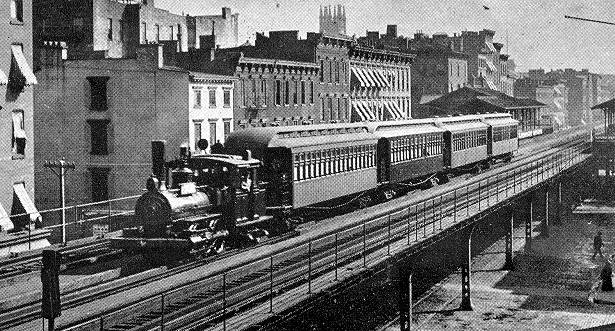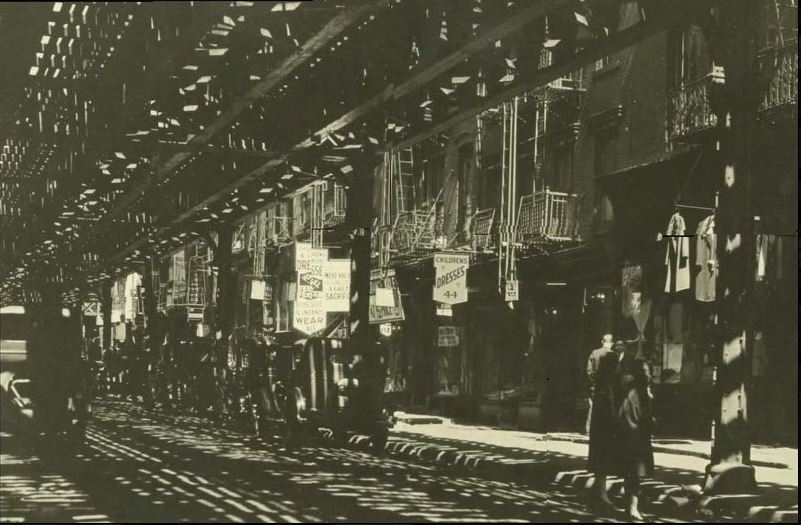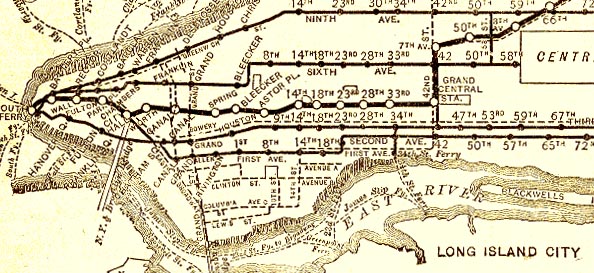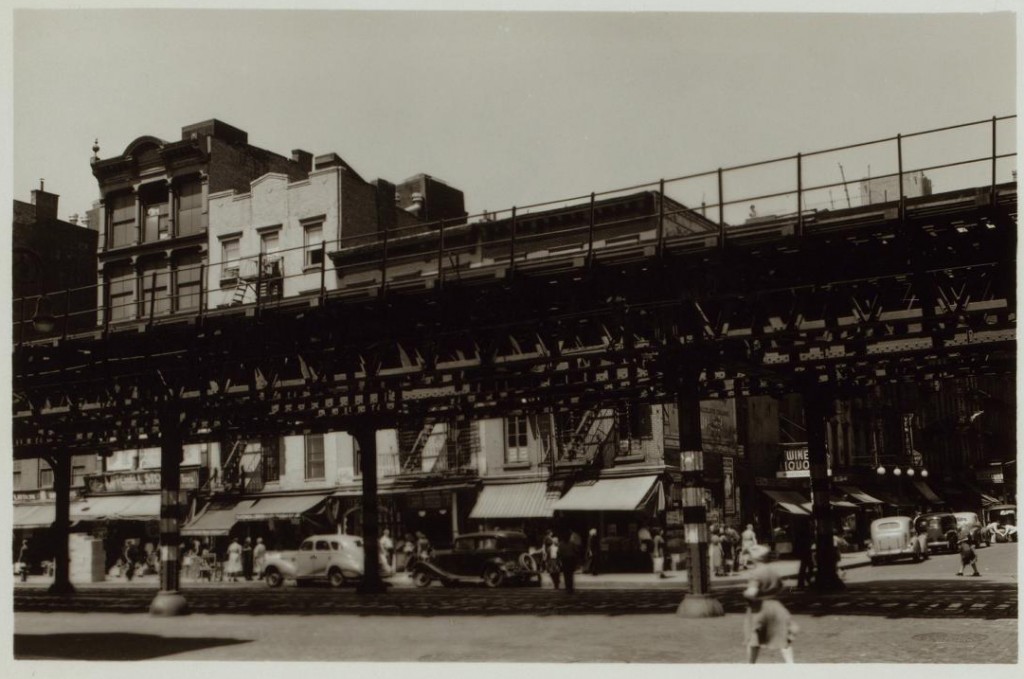Blog Archive
A Brief History of Elevated Trains in NYC
July 2, 2013
Did anyone take the subway today? If you did, chances are good that the train went underground for at least part of your commute. But underground subways are a relatively new mode of transportation in New York City; the first mass transit trains all ran above ground.
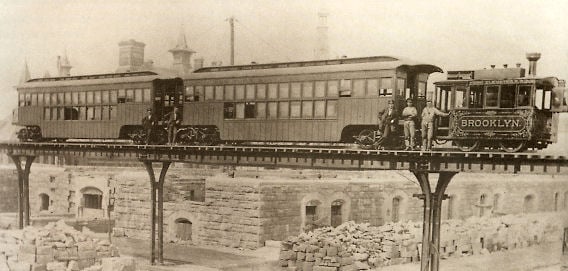
A ‘shad-belly’ car circa 1878. These cars had the floor between the wheel wells, or ‘trucks,’ lowered so that the cars would look more stable and people wouldn’t worry about the cars tipping over.
History of Elevated Trains in NYC
The first elevated trains, or “els,” ran in New York City on this day in 1878. The trains on the el tracks were actual trains – large, dirty, and heavy steam powered locomotives. The idea of using horse drawn cars, rather than trains, was floated, but there is one thing worse than ash and cinders falling from elevated tracks, and it comes from horses… so the idea was quickly shot down.
The elevated trains puffed and smoked their way down most major avenues in the city. By 1880, most Manhattan residents lived within a 10 minute walk to an el.
Tenants in 97 Orchard Street could almost certainly hear the Allen Street portion of the Second Avenue el, one block over, built in 1878 and opened in 1880. The Allen Street el train rumbled from Houston Street to Division Street (near what is today the Manhattan Bridge). The elevated tracks were dirty and loud; they blocked out the sun to the already dark and crowded street below and the soot from the locomotive filled the air.
Despite the unpleasant side effects, the el train gave the people of the Lower East Side a precious gift that many of us now take for granted: mobility. The el meant that one could live, work, shop, and play in different neighborhoods. For one low price a passenger could get on the elevated train in Lower Manhattan and simply ride above the people and the horses until they got off at Central Park South or any other location on the nine miles of track. A walk that would take hours now took a matter of minutes. This mobility was extremely popular to people; 14 million people took the el in 1878 alone. The els helped New York City become the metropolis that it is today.
NYC Elevated Trains Today
The Second Avenue el was dismantled in 1942, with other tracks falling soon after. While none of the original NYC el train structures currently exist, we can see the remnants of these in Brooklyn, Queens, and the Bronx where the tracks loom above busy streets, screeching and sometimes sparking overhead, reminding us all that life in New York City was once even louder than it is today. Experience New York City history firsthand on our tours! Explore recreated 19th and 20th-century tenement apartments and the surrounding neighborhood on the Lower East Side of Manhattan.
– Posted by Lib Tietjen
